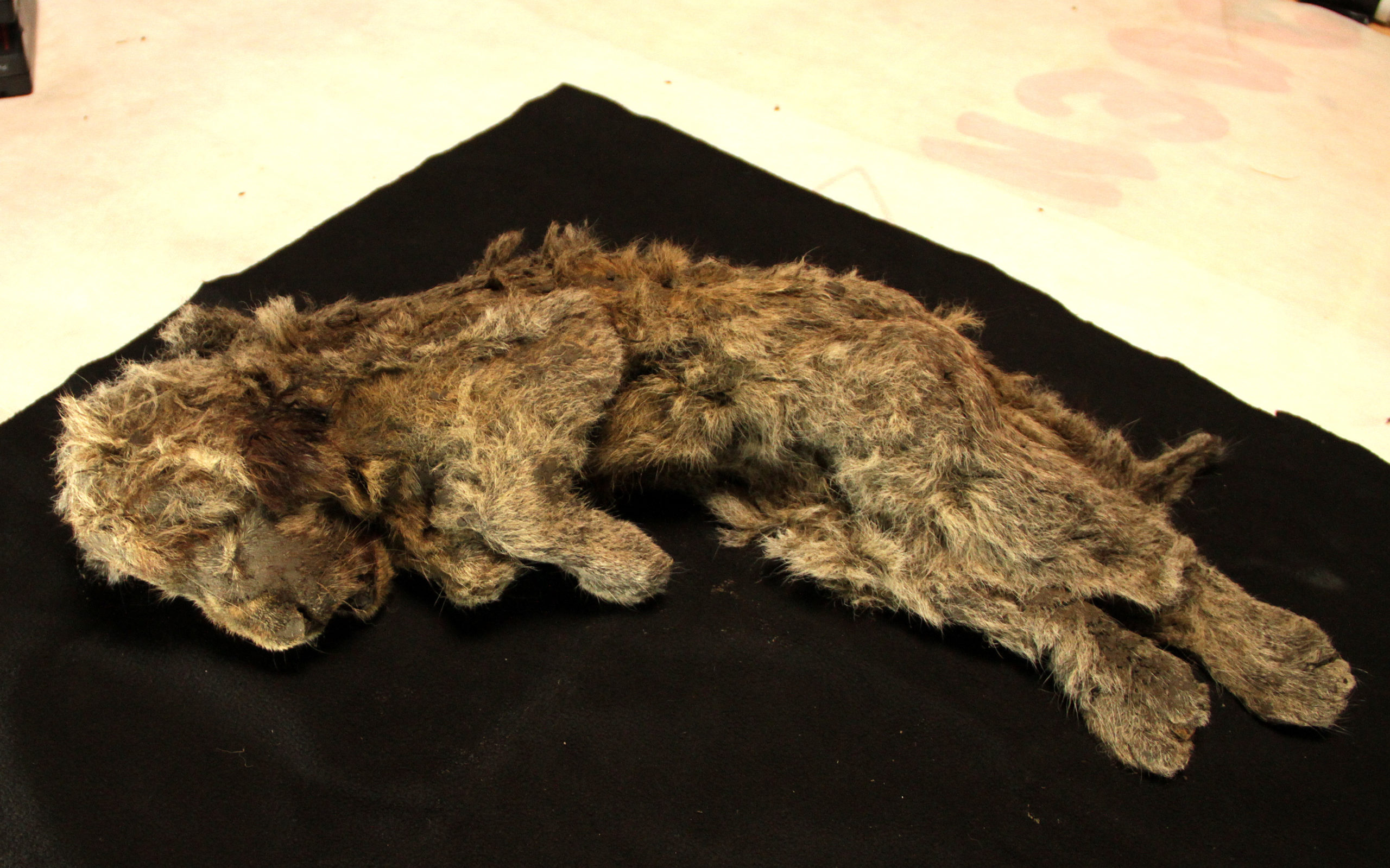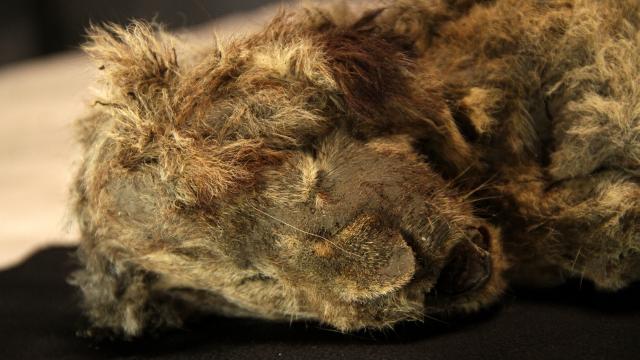A genetic analysis of ice age cave lions shows this species to be distinct from modern lions, ending a long-standing mystery. What’s more, the new evidence suggests these fearsome creatures diverged into two distinct lineages.
During the Pleistocene, lions lived across much of the Northern Hemisphere, including in Siberia. The northernmost of these beasts, dubbed “cave lions,” lived far outside the conventional geographic range of lions today. Paleontologists have questioned the origin of cave lions for years, wondering if they were modern lions that ventured way up north or if they represented an entirely different species.
A new paper in Scientific Reports appears to have settled this debate. By analysing and comparing dozens of gene sequences and sketching an evolutionary family tree of these ancient felines, scientists from the Centre for Palaeogenetics at Stockholm University have shown that lions and cave lions were distinct species. What’s more, the cave lions branched off into two subtly different lineages, having split into a group that lived in Siberia and a group that lived further west in Europe, according to the new research, co-authored by evolutionary geneticist Love Dalén.
In total, the researchers analysed 31 mitochondrial genome sequences, including DNA taken from an exquisitely preserved cave lion cub found two years ago in Siberia. The cub, dated to 28,000 years old, is one of the best-preserved animals ever found from the last ice age.

“We sequenced DNA from cave lion bones, teeth, and in one case a piece of skin from an exceptionally well-preserved cave lion carcass, from across their historic range,” David Stanton, the first author of the new paper and a former Marie-Curie Fellow at the Centre for Palaeogenetics, said in an email. “By measuring differences in the DNA, our best estimate for when cave lions and modern lions separated was 1.85 million years ago — much older than the split between any populations of lions that are around today.”
The dataset included several samples older than 100,000 years old, which revealed the split between the western and eastern cave lions. This result meshes well with previous work showing that cave lions, like modern lions, had different physical features depending on where they lived.

Cave lions “looked similar to modern lions, however they are thought to be slightly bigger,” said Stanton. Fascinatingly, Pleistocene humans, who lived alongside cave lions during the last ice age, painted these lions on cave walls. Based on these renderings, it appears that cave lions were very similar to modern lions, but they lacked manes, he explained.
“These animals would have lived in a landscape that was cool and dry and dominated by open grassland — much of which disappeared after the last Ice Age,” said Stanton. “They lived alongside animals such as bison and horses, as well as other animals that went extinct at a similar time to cave lions, such as woolly rhinos and woolly mammoths.”
The two cave lion lineages that lived in Pleistocene Eurasia likely feasted on different prey, with the eastern versions preying on bison and horses and the western versions on reindeer, according to the study.
The reason for their extinction isn’t fully understood, but like so many other animals, they disappeared at the end of the last ice age. Loss of habitat and possibly humans overhunting large prey animals were likely contributors to their demise.
